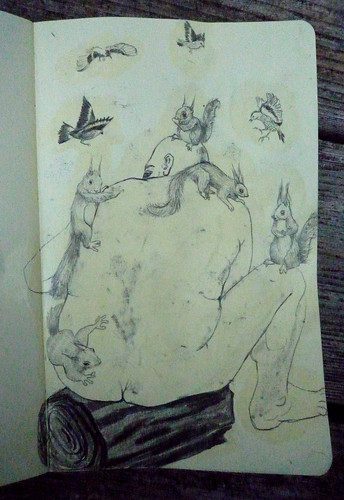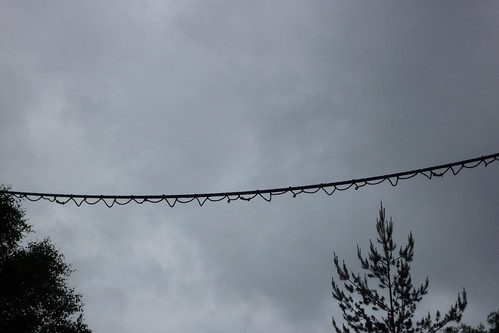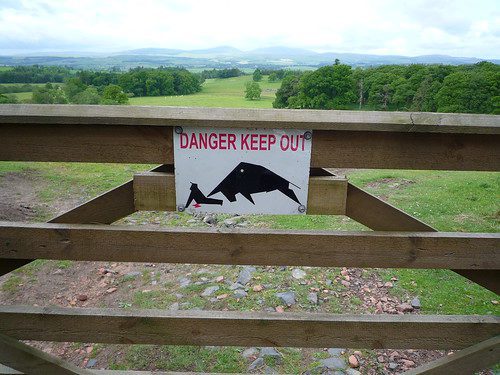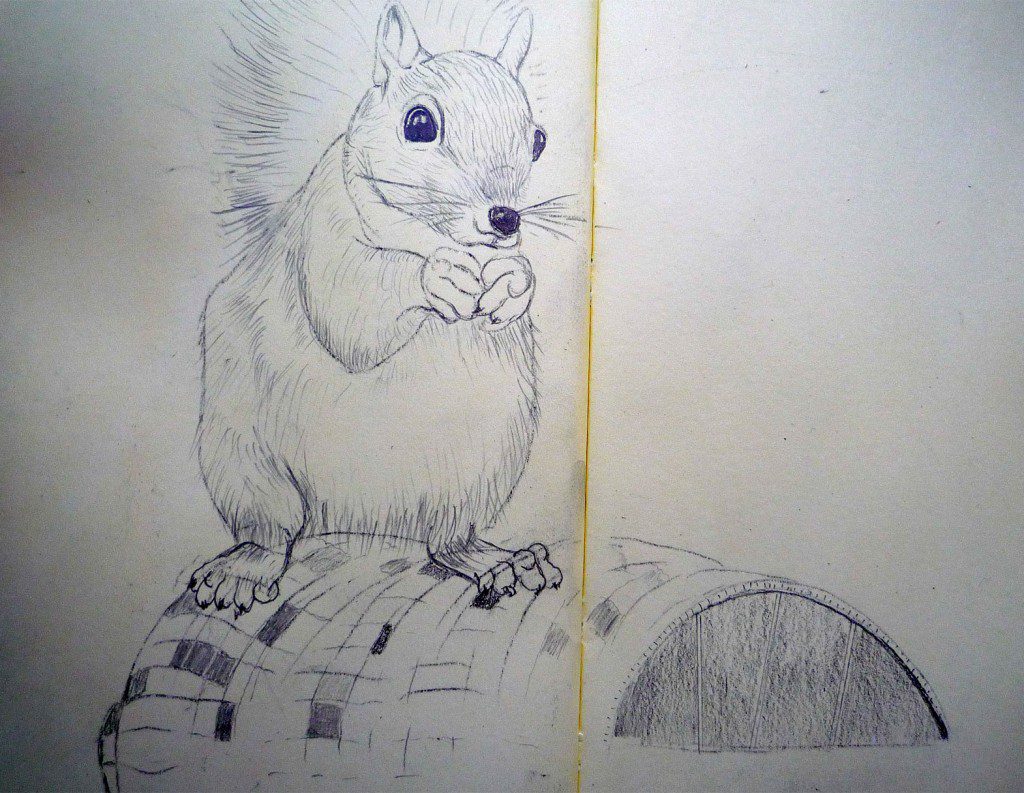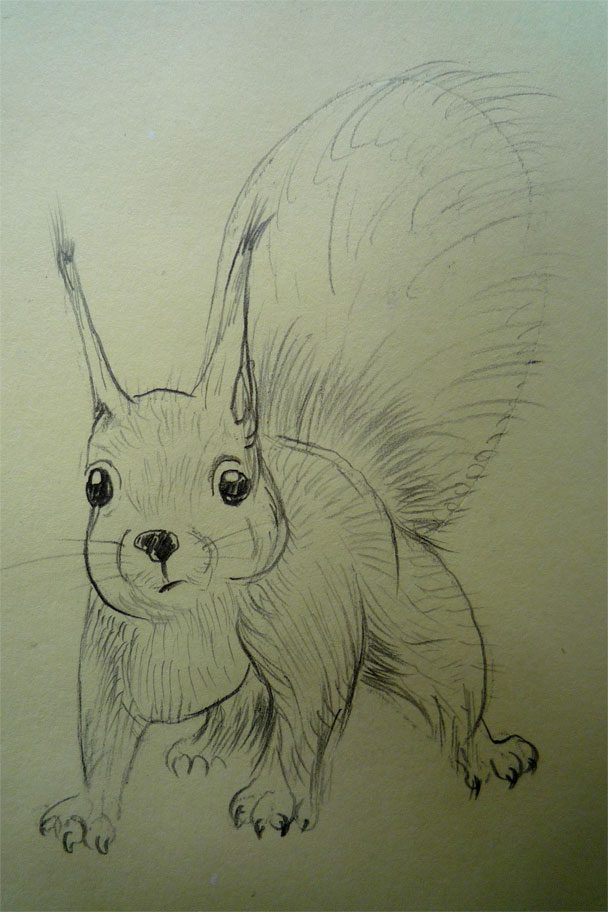Research Journal
-
June 24, 2009
who doesn’t love a trampoline?
Tags:Michelle Hirschhorn pointed this out last night…
the UK craze for trampolines + happy little wild things
(and some call them pests…) -
June 22, 2009
Drawings II (the friend feeder I)
-
June 21, 2009
Propping up the species
The red squirrel needs our help.
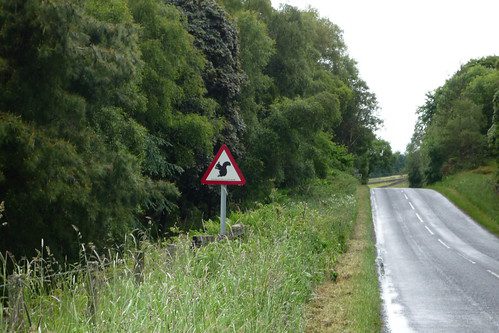
Warning! Stay alert. And so local school children near Greenhough responded, raising the money to build a rope bridge to help squirrels cross the road — a rare stretch of two-lane road near Kielder (as opposed to single track) on which reds were getting flattened.

A squirrel bridge, made of rope, and high above the road, critically connects two pieces of woodland. I couldn’t find any online local news about this particular bridge, but sources say that no squirrels have yet been sighted making use of it.
University of Leeds, however, has conducted a study on the use of rope bridges:
A study has proved that red squirrels can and do make use of special crossings set up over busy roads.
A researcher from the University of Leeds’ Faculty of Biological Sciences conducted a survey to discover whether red squirrels living in Loch Lomond and the Trossachs National Park were using rope bridges installed by a local wildlife group.
This kind of bridge is usually installed at sites where there have been fatalities recorded but up until now no-one has collected any data to show whether or not they are actually used by the animals.
Stephen Lockwood, who is completing a masters’ degree in biodiversity and conservation, took specialist training in tree climbing so that he could to set up equipment to record the squirrels’ movements. In addition to using cameras he also used tubes filled with nuts and sticky tape to gather hairs and clay moulds to record the animals’ footprints.
He says: “This isn’t just about cutting down on the number of squirrels killed on the roads. We also know that when a natural habitat becomes fragmented, such as by the introduction of unnatural barriers like roads, there is a lesser chance of the species surviving in the long term because the opportunities for breeding are fewer. The bridges hopefully encourage the squirrels to explore a wider area and therefore lessen the chance of inbreeding. By finding out whether they actually use these bridges we can assess how useful it is to install them.”
(The complete press release from University of Leeds here.)
-
June 19, 2009
Exmoor Wild Ponies enlisted as horticulture specialists
Tags:I saw wild Exmoor Ponies, a feral breed of horse, up on the moors near High Green. They’ve been brought here from Devon in a land management scheme – eating invasive grasses and bracken in the hope that rarer wildflowers will flourish. They also don’t touch the heather.
Exmoor ponies are a hardy breed who have for centuries survived in a harsh and sometimes treacherous landscape. These fascinating, half-wild creatures have gentle looks and a willing nature, they are descended from wild horses domesticated by the Celts of pre-Roman times and are now conserved as a ‘rare breed’. (Pictures of England)
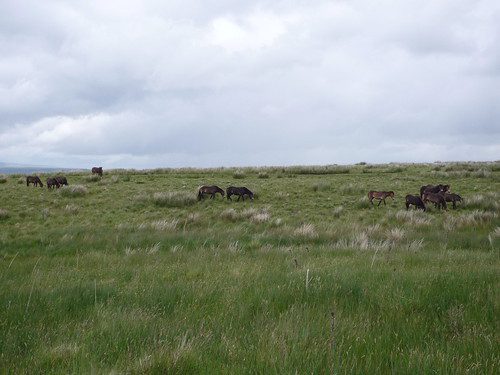
Exmoor Ponies at HIgh Green, Northumberland 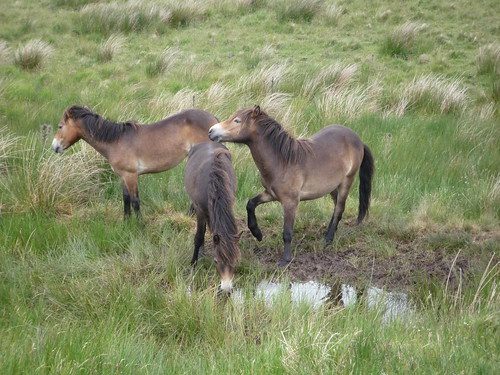
Livestock break up the soil for wildflowers to seed into and the Exmoor ponies are ideal for this as they are environmentally friendly and less destructive than large machinery, will eat the most vigorous and inhospitable plants such as gorse and can penetrate the smallest and most remote locations.
Exmoor ponies are classified by the WWF-UK as “critically endangered” due to their dramatically decline in numbers since the 2nd World War. The ponies to be used at Kielder will be used on grazing schemes for the next few years until they are old enough to be sold as family ponies – their places will then be taken by another group of younger ponies in the scheme. (Northumberland Wildlife Trust)
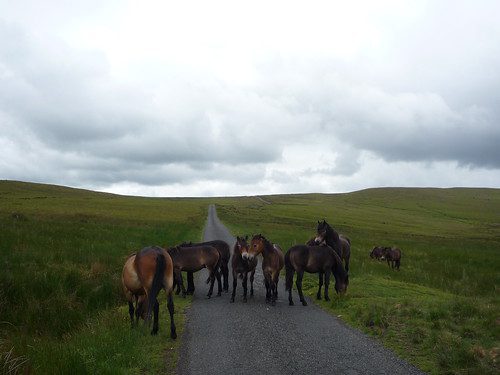
Like the wild cattle, if you stay long enough they tend to be curious and will come right up to you to inspect. They’re lovely, with coloration that looks like it got rubbed away in places.
-
June 19, 2009
Chillingham Wild Cattle
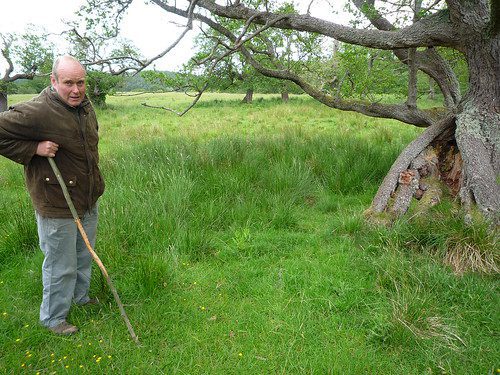
- Chris Leyland, manager of the cattle, takes us on a tour – the park has some ancient alder trees
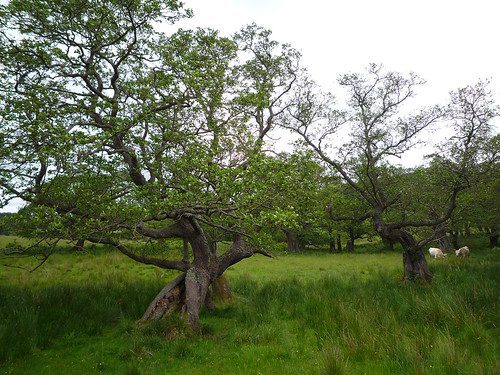
- Alder and cattle in bg
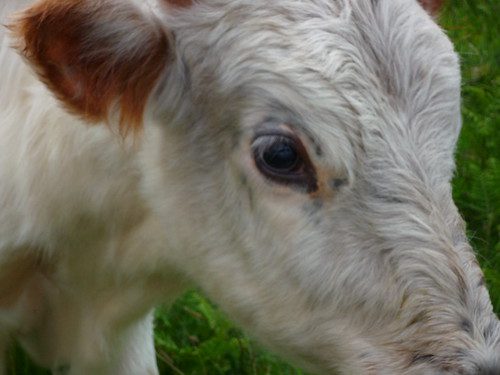
- Sometimes called “Fairy Cattle” for the unique red fur in ther ears
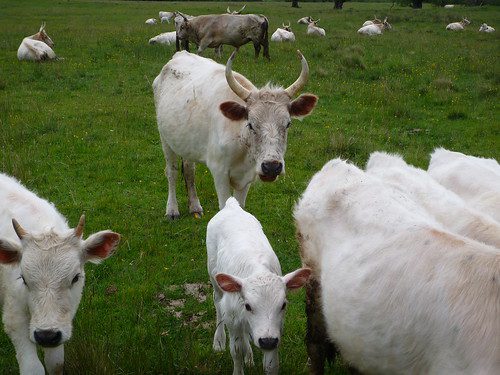
- They darken in color as they get older
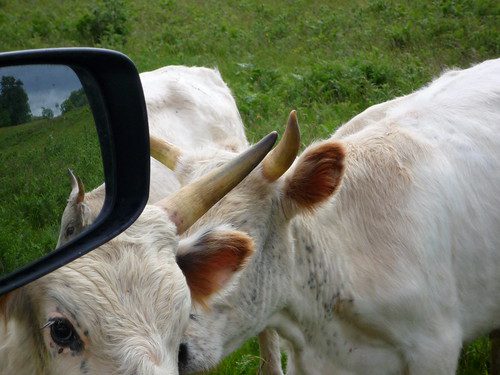
- definitely curious about us, but on their own terms
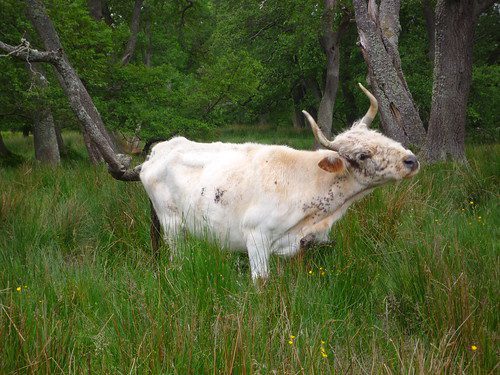
- the oldest lady with crooked horns – she’s 17, but still can satisfy a good itch
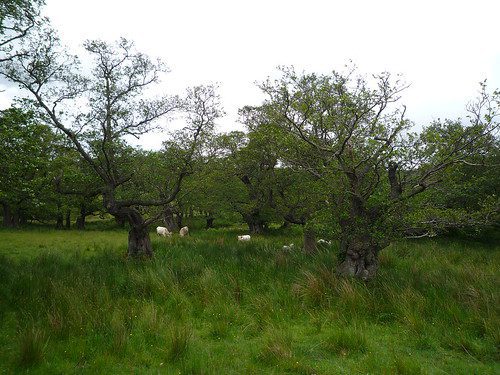
- there are about 87 cattle in all
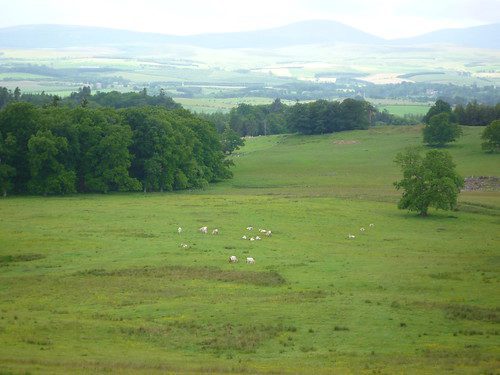
- with a decent park range – no shortage of grazing food, minimal human intervention, hay in winter
-
June 18, 2009
Squirrel tourism
My first red squirrel today – actually 2 of them. Not a hard find- there is a very nice, very fancy, very comfortable, and very well-stocked wildlife hide set up in Kielder Water, at Leaplish. It’s rather National Geographic- except with no effort to conceal the lure of an arsenal of feeding stations, in all of which the reds were happy to partake.
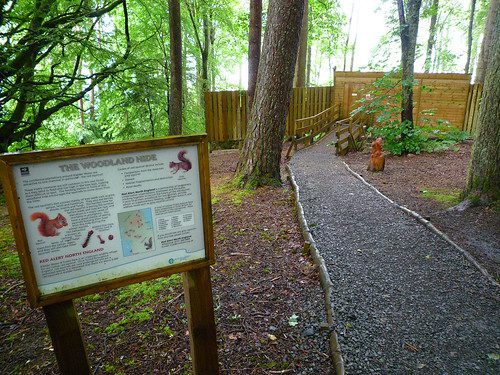
The Leaplish Squirrel Hide Those flirty, spoiled little bastards, I kept thinking; they run in, snack it up, run out, scamper off, run back in, snack… & cet. After an hour, the pair conceded to frolic round their proper feeding box. And gambol they did.
I missed the first shot: the distended, carved wooden red squirrel effigy you can see along the path (above photo), with its spry referent in sight (which had fled by the time I snapped the photo).
It was raining when I got to the hide, so I had the place to myself. It was a shady wonderland; then the sun came out; then the squirrel fans came. Reverentially. With huge whispered sighs and wide eyes. It’s amazing what we are willing to look through, in order to experience nature (me too!). But I’m through blocking the intercessions. In this case, one couldn’t – these reds are on welfare assistance, propped up in a managed forest (their last stronghold), essentially a timber concern full of caravans, water skiing lessons and motor boats.
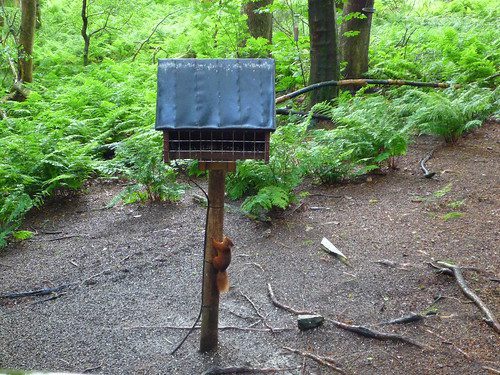
The Main Feeder Lest I mislead with my semi-acrid tone, it was a thrill. They’re as cute as their pictures: petite, scampering, with ginger coats, tufty ear extensions, alert expressions, and compact physiques. I’m charmed, and querulous.
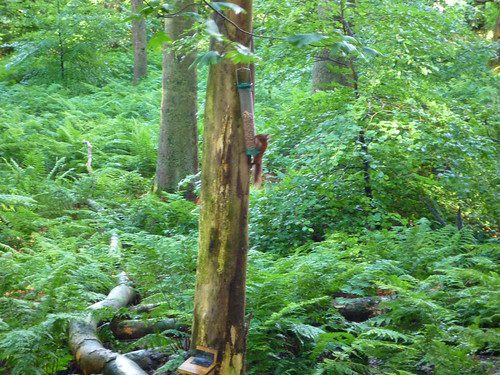
A bird feeder -
June 17, 2009
Christopher Smart
Fashion swings this way and that, with regard to the construction of nature on offer – its pendulum swung farther towards novel or traditional. Currently, the tastemakers want indigenous, and are beginning to pay well for green (privileged locavores and nationalized tree planting subsidizers, to name two user groups willing to cough up the surcharge).
I found this quote from Christopher Smart in Keith Thomas’ Man and the Natural World: Changing Attitudes in England 1500-1800:
“I pray God for the introduction of new creatures into this island,” Christopher Smart would sing, “For I pray God for the ostriches of Salisbury plain. the beavers of the Medway and silver fish of Thames.”
(from Jubilate Agno)
-
June 17, 2009
England poised for further invasion!!
Tags:It’s a fever.. of xenophobia:
An army of foreign mammals, birds and amphibians is poised to invade Britain – changing the countryside and threatening our best-loved native wildlife, scientists warn.
They have identified 84 exotic species – from the raccoon to the snapping turtle – which could become established within the next few decades.
Some, like the leopard cat, could escape from zoos or private collections, while others, such as the eagle owl, are already living in isolated pockets of the countryside.
from the “Raccoons and Snapping Turtle Join the Foreign Threat to our Native Wildlife,” Daily Mail, May 2009
the operative word is could…
-
June 17, 2009
A flower clock
Tags:NY Time’ guest columnist Leon Kreitzman writing for Olivia Judson’s The Wild Side, wrote in April about bees’ ability to tell the time of day and harvest pollen accordingly
In “Philosophia Botanica” (1751), the great taxonomist Carl Linnaeus proposed that it should be possible to plant a floral clock. He noted that two species of daisy, the hawk’s-beard and the hawkbit, opened and closed at their respective times within about a half-hour each day. He suggested planting these daisies along with St. John’s Wort, marigolds, water-lilies and other species in a circle. The rhythmic opening and closing of the plants would be the effective hands of this clock.
Here‘s a suggested collection of plants to use, which would open in sequence over time.

Horologium Flore, via Whispering Crane Institute I’m staying at the sculptor Julia Barton‘s beautiful house in a hamlet called Donkleywood in Northumberland National Park, surrounded by sheep fields. It’s raining out, and her garden is sparkling. Swallows are absailing in and out of the eaves.
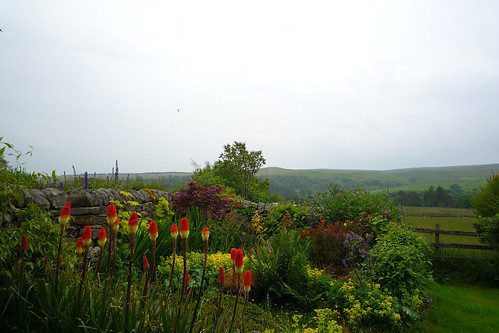
Julia Barton's garden -
June 15, 2009
Drawings I
